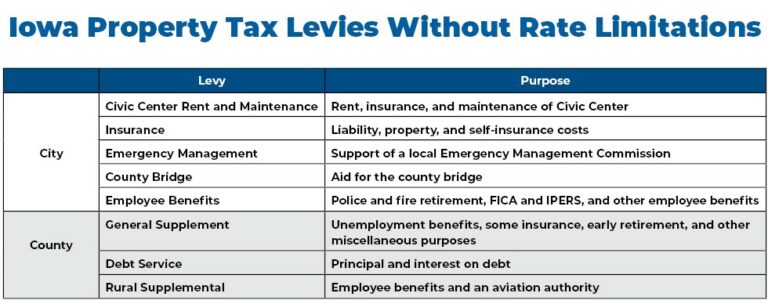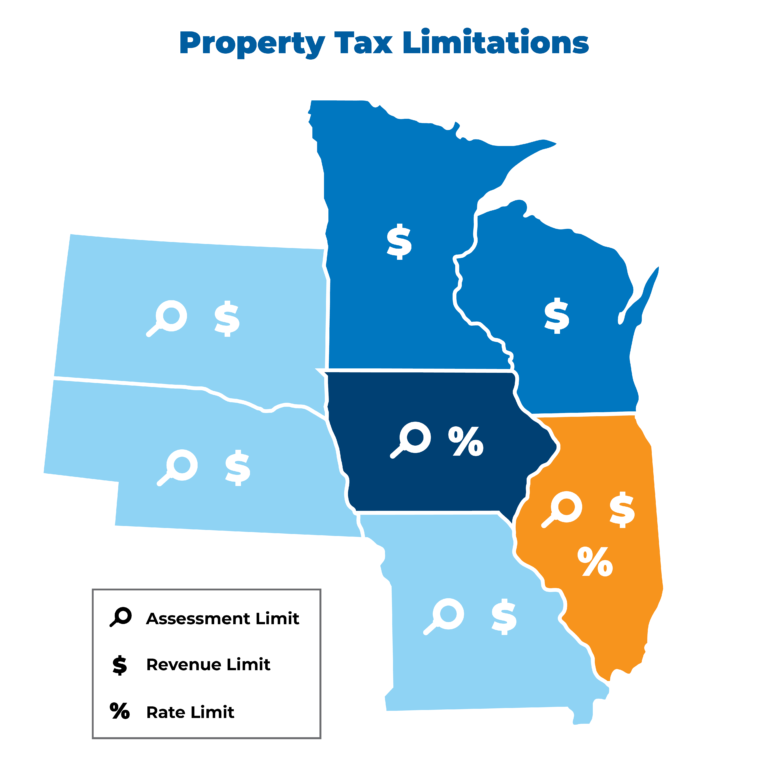When rate limits apply selectively, taxing authorities can shift responsibilities to those without them. Over time, local government spending goes up, and the intent of the rate limit is negated.
BACKGROUND
Local taxing entities have layered multiple tax levies on each property in addition to general taxation, such as levies dedicated to public libraries, emergency management, debt service, cemeteries, and flood and erosion control. Iowa cities have around 30 different levies, while counties and townships have around 10, and other taxing districts, such as agricultural extensions, county hospitals, and miscellaneous districts, have fewer. Iowa applies the maximum levy rate limit to each individual levy, not on each level of government or in aggregate. And several types of levies continue without limitations, being permitted at the “amount necessary.”
PROBLEM
Uniformity in property taxation is highly desirable, but with so many unique combinations of levies, local governments in Iowa have inconsistent property tax rates. Iowa cities’ consolidated tax rates range from $18.13 per $1,000 of assessed value in Bankston to $50.60 in Lamoni. For counties, the urban rate ranges from $2.70 in Dickinson County to $10.35 in Decatur County.
When rate limits are applied selectively, taxing authorities can shift responsibilities to those levies without limits. Over time, local government spending goes up, and the intent of the rate limit is negated. Overall, Iowa has a statewide average effective property tax rate of 1.53%, which is well above the national average of 1.07%. This gives Iowa the 11th highest effective property tax rate in the country.

Source: Summary of Tax Levy Rate Limitations 2022, Iowa Department of Revenue
SOLUTION
Allow local governments one, capped levy for general operations and remove the others. Using a rate limit for property taxes is a neutral way to limit taxation. It keeps substantially similar properties from bearing radically different tax burdens from community to community across the state. Many of the additional levies are paying for standard functions of government, anyway, and should be included in the capped general levy. If separate levies for different purposes must continue, all of them should have rate limitations.
Additionally, the collective bargaining reform Iowa enacted in 2017 (HF291) eliminated the need for unemployment compensation, tort liability, and the Federal Insurance Contribution Act (FICA) to have separate levies with no rate limits. These levies should be consolidated into the general levy for all local taxing entities.

Source: Tax Foundation
This piece is part of an upcoming comprehensive Iowa property tax tool kit.
